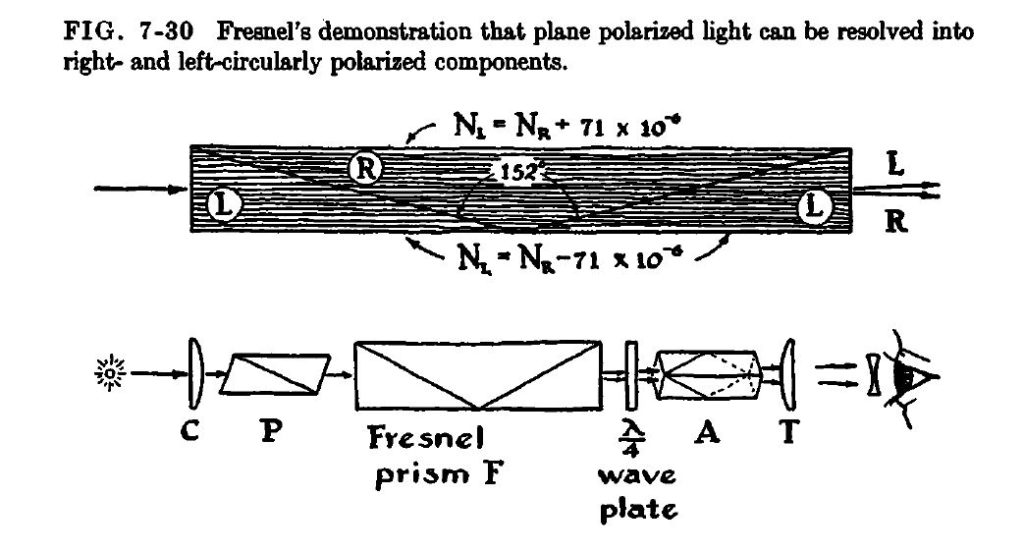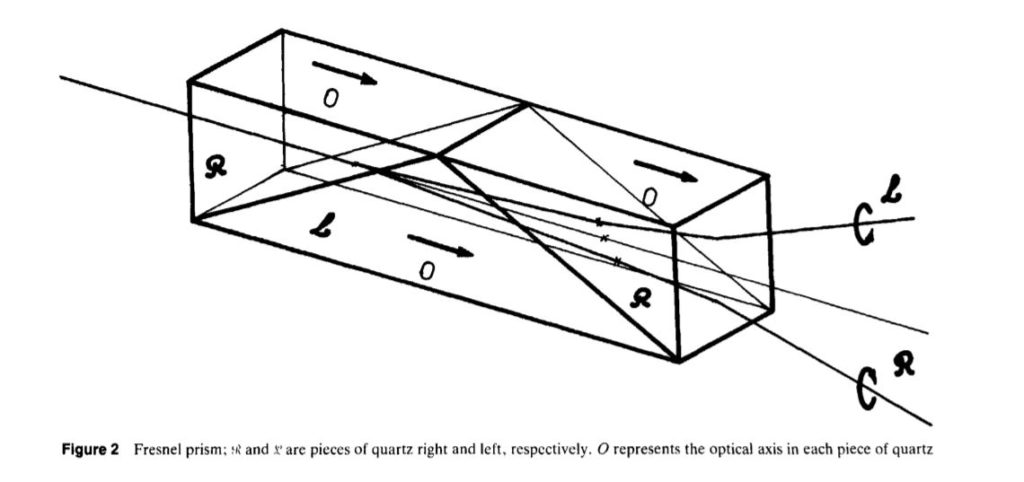Recently I have become interested in the Fresnel triprism (sometimes also simply known as Fresnel prism). It is a prism made of quartz cemented in between two other half prisms also made of quartz, but with opposite handedness than the central prism. See below a drawing of this prism from the book “Concepts of Classical Optics, by J. Strong (1958)” which was republished by Dover in 2012.
Fresnel demonstrated as early as in 1822 that an incident beam of unpolarized light could be separated into its circularly polarized components (by multiple refraction through a composite prism of alternating left- and right-handed quartz segments). Fresnel was describing a phenoma of double refraction in Quartz along the optic axis, based on the the difference in phase velocities of states of opposite circular polarization. The interesting point is that this double refraction is an interface effect at the prism’s interfaces, because left- and right- circular polarization present differential refraction and they are refracted (i. e. deviated) by a different angle.
The triprism produces rays of perfect LCP and RCP, with an angular separation dependent upon the dimensions of the prisms and the wavelength, from a collimated incident beam of unpolarized or plane-polarized light. It seems that the there was a time when the Fresnel prism (or variations of it adding even more prisms with alternating handedness to magnify the effect) was quite popular, and the properties of this Fresnel prism are mentioned in many books. However, nowadays is mostly a forgotten optics relic and, apparently nobody is manufacturing them any more. They can probably still be found in some old laboratories, but I have never had the chance to see one (yes, I am searching one!).
I think that the Fresnel triprism could really helpful to teach concepts about the polarization of light and optical activity, because it is the most clear experimental demonstration that unpolarized or linear-polarized light can be decomposed in LCP and RCP contributions. And more importantly, I also think that the Fresnel triprism could have today many applications in chiroptics, as it is probably, one of the most elegant (and argueably better) ways to generate good circularly polarized light. Remember that current methods to generate circular polarization are almost always based in the use of quarter-wave retarders, optical components that tend to be chromatic and with a non-ideal polarization response. In contrast, crystal-based polarizers tend to be very achromatic and with an almost ideal polarization response because, like the Fresnel triprism, are based in the beam splitting due to double refraction.
The only paper known to me where the Fresnel prism was used for a chiroptical application is R. Manuel Echarri, The fresnel prism as polarization interferometer, Microwave and Optical Technology Letters 6(7):403-407,1993. See below a figure from this paper. The author of this paper recently told me that the prism he used was lost among old materials and probably was more than 100 years old.
Somebody wants to make Fresnel triprisms again?


